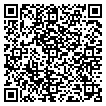Grounding is the most basic safety protection measure in electrical systems, and it has become more and more widely used in China in recent years. Exothermic welding is a method that uses the reaction between chemical raw materials to generate high energy and high heat to weld the grounding material into a whole, which ensures the stability and durability of the entire grounding system. The grounding system is a mesh system composed of grounding electrodes buried underground and grounding wires laid underground or inside structures. The grounding system introduces possible leakage currents on electrical equipment and lightning currents caused by lightning into the ground to achieve Ensure electrical equipment and personal safety, avoid electric shock, fire and other accidents. Commonly used grounding wires in various projects are galvanized flat steel, copper-clad steel or bare copper wires. The traditional connection methods between grounding wires are welding or mechanical connection. With the passage of time, the connection point of the grounding wire laid underground is easy to be corroded, which affects the life of the grounding network. In high-salinity areas or places with high grounding requirements, the current-carrying capacity and corrosion resistance of the grounding wire and its connection points have high requirements. In recent years, more and more applications of exothermic welding processes In the implementation of the grounding project, the stability of the grounding system is greatly improved, and the service life of the grounding system is prolonged. How to improve the application of the exothermic welding process in the grounding system and how to improve the quality of the exothermic welding process has become the common pursuit of all construction units and construction units.
Website: https://www.sltup.com/

 Loading
Loading













